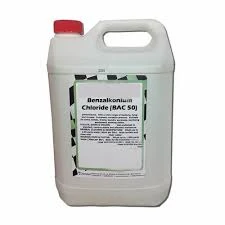Properties and Applications of Acrylic Acid Homopolymer in Diverse Industries
Understanding Acrylic Acid Homopolymer Properties and Applications
Acrylic acid homopolymer, often referred to as poly(acrylic acid) or PAA, is a synthetic polymer derived from the polymerization of acrylic acid monomers. This versatile polymer exhibits a unique combination of properties that make it suitable for a wide range of applications in various industries.
One of the defining characteristics of acrylic acid homopolymer is its high water solubility. This property allows it to readily form gels and solutions, making it an excellent candidate for applications in the personal care and cosmetics industries. For instance, PAA is commonly used as a thickening agent in lotions, creams, and shampoos. Its ability to retain moisture enhances the performance of these products, providing smooth texture and improved efficacy.
In addition to its extensive use in personal care formulations, acrylic acid homopolymer is also employed in various industrial applications. Due to its adhesive properties, it is utilized in the production of adhesives and sealants. The polymer's robustness ensures strong bonding capabilities, making it an ideal choice for construction and manufacturing sectors. Moreover, PAA’s ability to form films contributes to its use in coatings, providing protective layers that enhance durability.
acrylic acid homopolymer

Another distinctive feature of acrylic acid homopolymer is its sensitivity to pH changes. When the pH increases, PAA becomes more ionized and expands, allowing it to absorb significant amounts of water. This property is particularly advantageous in agricultural applications, where it is used as a superabsorbent polymer in soil conditioning. By improving water retention in soil, PAA aids in the growth of crops, making it beneficial for sustainable agriculture practices.
In the medical field, acrylic acid homopolymer finds applications in drug delivery systems and biomedical devices. Its biocompatibility and ability to form hydrogels make it suitable for encapsulating drugs and facilitating controlled release over time. This capability is crucial for developing innovative therapies and enhancing patient outcomes.
Lastly, the environmental impact of acrylic acid homopolymer has garnered increased attention. As the demand for eco-friendly products rises, the focus on developing biodegradable variants of PAA is gaining momentum. Researchers are exploring sustainable methods of synthesizing acrylic acid homopolymer to reduce its ecological footprint while maintaining its functional properties.
In conclusion, acrylic acid homopolymer is a multifunctional polymer with diverse applications across the personal care, industrial, agricultural, medical, and environmental sectors. Its unique properties, including water solubility, adhesive strength, and sensitivity to pH, make it a valuable material for innovation and development. As research continues to explore new uses and sustainable solutions, the potential of acrylic acid homopolymer remains vast and promising.
-
Water Treatment with Flocculant Water TreatmentNewsJun.12,2025
-
Polymaleic AnhydrideNewsJun.12,2025
-
Polyaspartic AcidNewsJun.12,2025
-
Enhance Industrial Processes with IsothiazolinonesNewsJun.12,2025
-
Enhance Industrial Processes with PBTCA SolutionsNewsJun.12,2025
-
Dodecyldimethylbenzylammonium Chloride SolutionsNewsJun.12,2025





